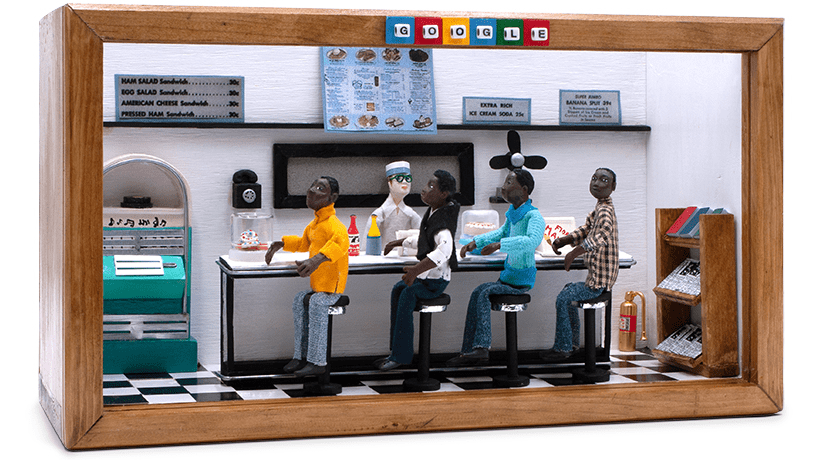Today's Google Doodle is 60th Anniversary of the Greensboro Sit-in.

In honor of Black History Month, today’s diorama Doodle, created by Compton-based guest artist Karen Collins of the African American Miniature Museum, remembers the Greensboro sit-in on its 60th anniversary. Organized by four Black college freshmen who became known as the “Greensboro Four,” this protest against segregation was a key part of the Civil Rights Movement, sparking a series of similar demonstrations throughout the nation.
Inspired by Dr. Martin Luther King, Jr.’s nonviolent protests for racial equality, North Carolina A&T State University freshmen Ezell Blair Jr. (a.k.a. Jibreel Khazan), David Richmond, Franklin McCain, and Joseph McNeil, met at the local Woolworth’s department store in Greensboro, North Carolina on this day in 1960. The group requested service at the “whites-only” lunch counter—a common discriminatory and segregation practice by US businesses and institutions allowed by Jim Crow era laws. Denied service, the four continued to peacefully occupy their seats and refused to leave until the store closed at night.
In the days and weeks that followed, the “Greensboro Four'' were joined by hundreds of other protesters. As the movement grew however, so too did the opposition, who routinely verbally harassed protesters with racial slurs—even resorting to spitting and throwing food at the nonviolent demonstrators. Undaunted, protestors were willing to repeat the sit-ins for as long as necessary, in hopes that the establishment would feel pressured to desegregate.
As a result of the movement’s passion and resilience, Woolworth's fully integrated their dining area on July 25th, 1960. Catalyzing a much larger nonviolent sit-in movement across the country, the protests played a definitive role in the fight for civil rights. In its wake, segregation of public places became illegal under the Civil Rights Act of 1964.
In recognition of this historic demonstration, the Woolworth’s Department Store in Greensboro is now the International Civil Rights Center and Museum, and part of the counter is housed at the Smithsonian National Museum of American History in Washington, D.C.